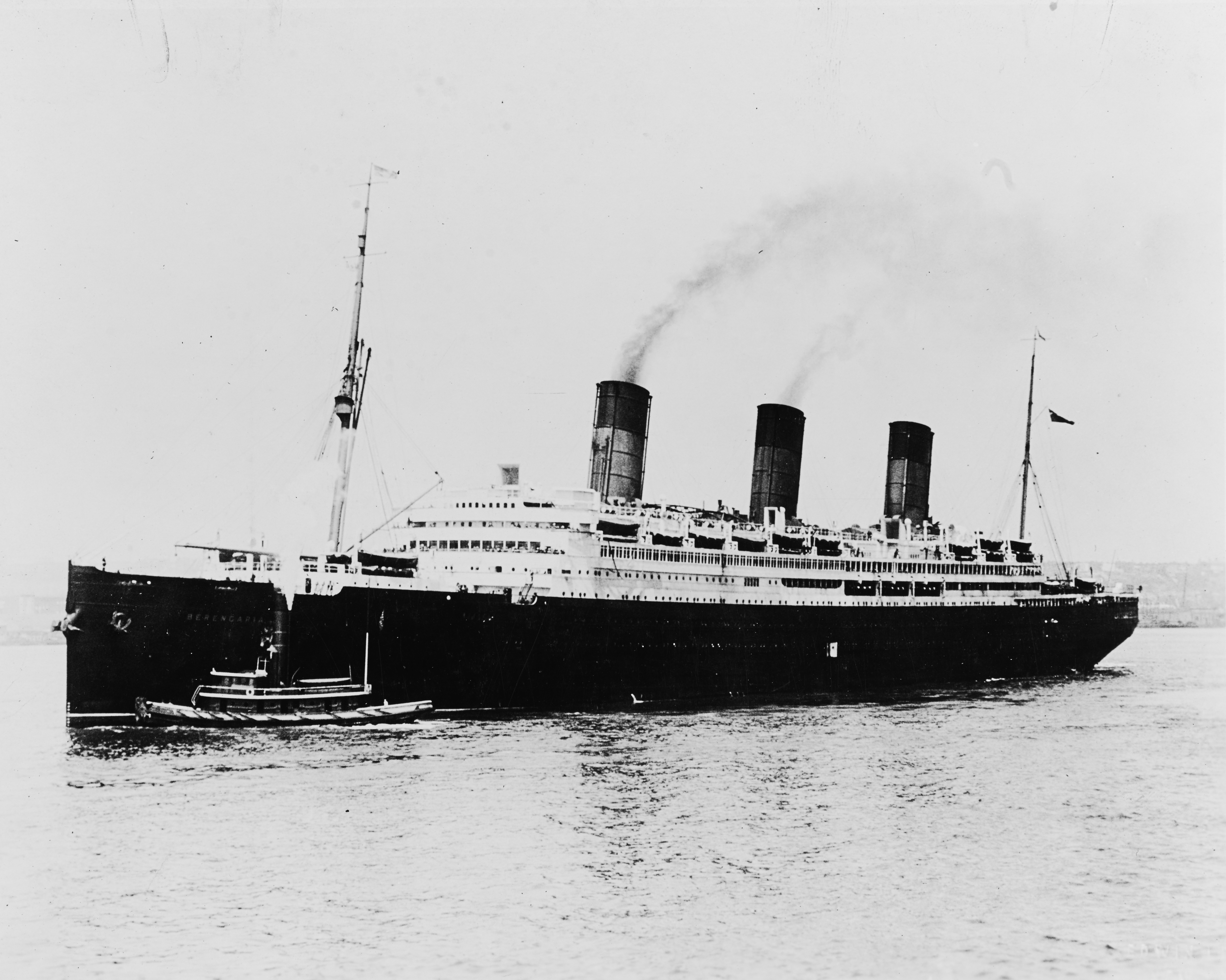Berengaria

Berengaria was Cunard’s first Queen – named after Queen Berengaria, the Queen Consort of Richard the Lionheart.
Berengaria started her career as the pride of Hamburg-Amerika line. Her original name was Imperator and she was built by the Vulcan Werft Shipyard in Hamburg.
One of the ships designed by shipping legend Albert Ballin, Imperator was the world’s largest liner when she was launched on 23 May 1912.
With the ship’s launch only weeks after the loss of Titanic, and as such modifications were made to her design to improve safety aboard.
Changes included a double hull and a full set of lifeboats with enough space for all persons aboard.
The ship was abandoned during World War I, however following the war, in August 1919, she was placed into US service to help repatriate troops.
Following this use, the ship was jointly purchased (along with Bismark) by Cunard and White Star Line. Imperator was placed into the Cunard feet and started services under her original name; however after a lengthy and costly refit she was renamed Berengaria; and became the flagship of the Cunard Line.
Berengaria was converted to burn oil in the 1920’s and this greatly improved her fuel efficiency.
In 1926, during a transatlantic crossing, Berengaria lost 36 feet of guard rail in heavy weather.
In 1933, to make the ship more competitive against new liners (such as Bremen and Europa), Cunard gave Berengaria a major overhaul at Southampton, during which the interior was upgraded, while in 1935 she operated her fastest speed during a New York to Southampton voyage.
As Berengaria aged she was subject to a number of serious electrical fires which ultimately resulted in the ship’s withdrawal from service.
She was officially removed from the fleet on 23 March 1938 and after being laid up was sold for scrap.
Image source: Wikimdia Commons


